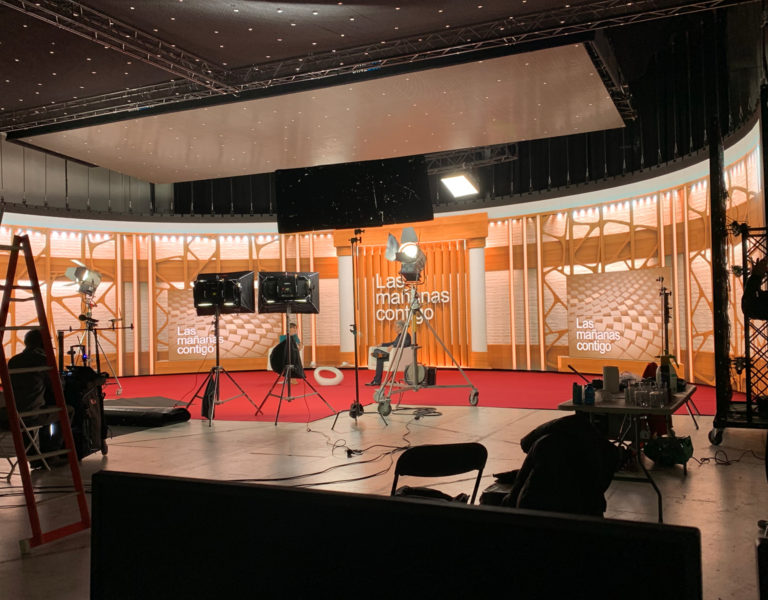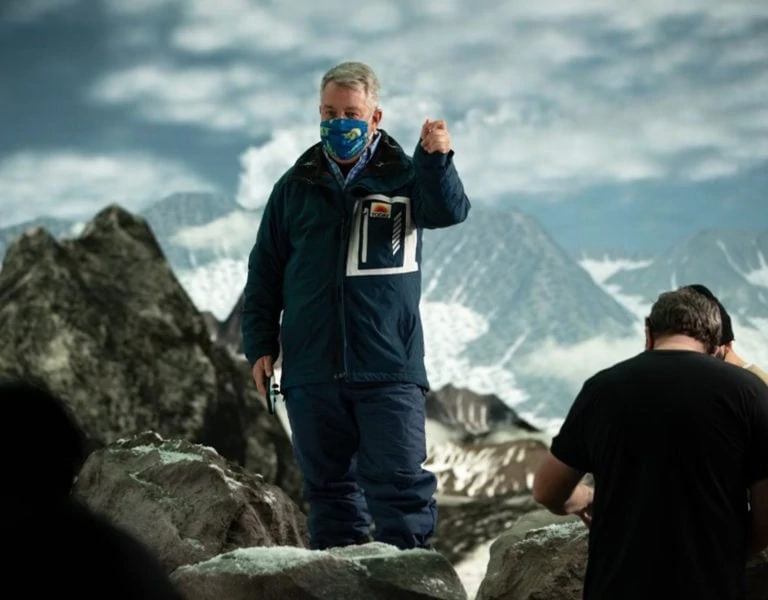Classified act
Cinematographer Paul Yee on lensing the turbulent story of NSA whistleblower Reality Winner.
It’s an otherwise ordinary Saturday afternoon in June 2017 and 25-year-old Reality Winner returns home to be accosted by the FBI. In a narrative that oscillates between nail-biting tension and dark humour, Reality echoes the real-life story of NSA whistleblower Winner, who leaked a classified report about Russian interference in U.S. elections to the press. Director Tina Satter used dialogue taken directly from the FBI’s transcript of Winner’s interrogation to create her 2019 Broadway play Is This a Room, and uses the same formula in her screen directorial debut.
Cinematographer Paul Yee has risen through the ranks of the camera and lighting department and jumped at the opportunity to lens Reality, having seen its Broadway predecessor. Here, he takes us behind the scenes on the shoot, including his lighting insights and successful collaboration with colourist Marcy Robinson.
Who or what inspired you to become a cinematographer?
As a kid, I was obsessed with movies and the cinema and aspired to be a filmmaker and storyteller. I did go to film school and lensed several short films, but I did not immediately consider cinematography as a career when I graduated. I needed to earn a living and couldn’t afford to buy a camera package so I spent several years working as a grip and electrician and then eventually a gaffer. After several years, I was able to save enough money to buy a Panasonic HVX-200 and slowly transitioned to videography and advertising work and then eventually documentaries and music videos.
The real career altering moment for me was when my dear friend and long-time collaborator Anna Rose Holmer invited me to photograph The Fits. That movie changed my career and life trajectory in so many ways. Every day I think about how privileged I am to have been part of that project.
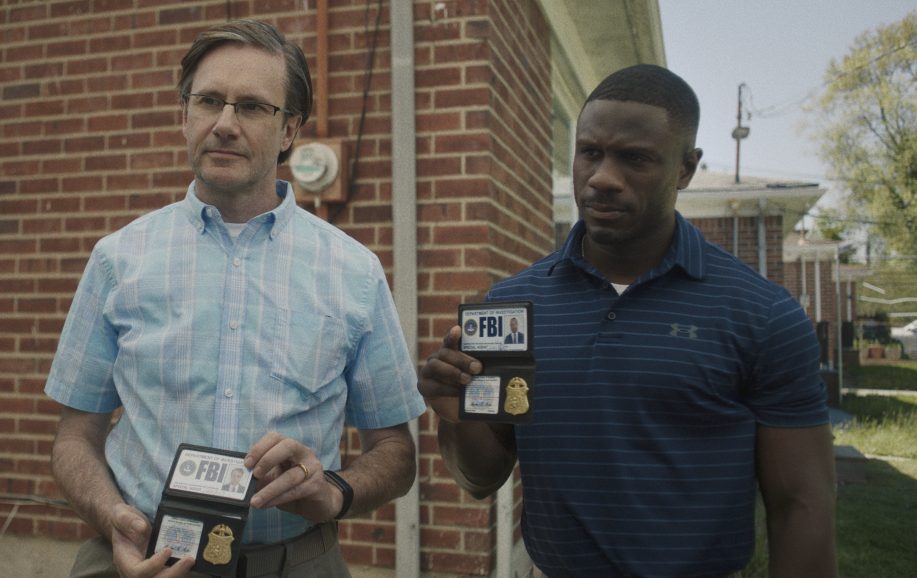
How did you come to join Reality, and what appealed to you about the project? How was it different to your other projects?
At the end of 2021, I wrapped production on Adele Lim’s feature Joy Ride which is this raunchy, riotous comedy about four friends on a crazy adventure through Asia. I talked to my agent about next steps and I told her that I’d really like to take on something that’s a little smaller, with fewer locations, and maybe a little more rigidity with the script [comedies tend to have a great deal of improv and alternate line reads]. Three months later she came back to me and said, “there’s this movie that takes place entirely in one house, and the script is verbatim to an FBI transcript.” and I was like, “OK – that’s a little on the nose. But tell me more.”
I had seen Is This a Room [the play that Reality is based on] when it was on Broadway, and loved it, so I knew that the story would work in even the most sparse setting – a minimally dressed stage with four actors. It was constantly reassuring during the production to know that the script worked and that the language was enough to carry the movie.
Take us back to your initial conversations with Tina Satter – what was her vision for Reality’s visuals, and what new perspectives did you bring?
Tina and I started by mapping out the emotional trajectory of Reality in each scene and noting how we wanted specific moments to feel and the lines that we wanted to land with extra impact. She was incredibly receptive to ideas about how we could enhance those moments with the camera and it was genuinely thrilling to imagine how scenes could play out and connect. I really love how she works as a director – she has such a precise and unique vision but invites people to bring their ideas to the table and when she connects with an idea there is a palpable enthusiasm. I think it fosters a creative environment that really makes you feel valued as a collaborator.
In the very early stages of prep, we taped out a small square in her apartment and she had an actor friend stand in for us. Then we used Cadrage [a lensing app] to explore different ways to cover these long stretches of dialogue. It was so helpful to practically look at options together even in this low fidelity way; I quickly picked up on the type of lensing that she liked and it also helped us to establish a language for working together on set.
The compositions, especially in ‘the room’, are intentionally sparse so every element (camera movement, set decoration, blocking, etc.) feels incredibly deliberate. Something that’s interesting about filming a movie in one single location is that the visual language can swing dramatically without bumping the viewer because you have the familiarity of the space. I think that’s something that we leaned into – using various camera and coverage techniques to convey Reality’s headspace.
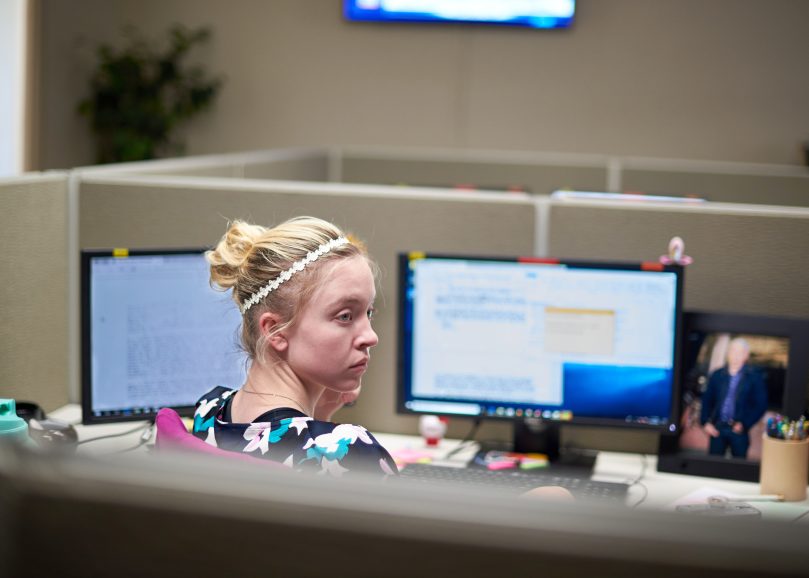
How long was prep and can you take us through your process?
We had four weeks of prep, but about a week in we all had to move to remote prep because of a COVID exposure. Shortly after we were cleared for in-person prep again, my wife got COVID so I had to remain remote, doing all of our planning via zoom. And then, five days later, I got COVID and had to fully isolate for 12 days. I was able to return in time for two days of in-person prep. Honestly, it’s such a bummer how badly our production was affected by COVID. We were planning on doing blocking rehearsals on location with Syd [Sweeney] and Josh [Hamilton] and Marchant [Davis], and everyone was willing and available but we couldn’t because of COVID isolation periods. I suppose the latent upside though, was that I did not have to worry about getting sick during the production.
We probably lost about a half day of filming due to other crew members’ positive COVID cases, and because I had had it recently, I was allowed on set by myself and would just film inserts of the empty room. It was a really nice opportunity to pick up the important establishing shots and connective cutaways that usually get pushed out of the schedule. I also spent about 20 minutes filming a snail on a window during one of our COVID pauses and that is in the movie in a big way!
What visual references did you and Tina exchange?
We watched a few films that are heavy on dialogue like My Dinner with Andre and Force Majeure. I think we both really admire Ruben Östlund’s work and how economic and precise he is with his camera angles, but ultimately, and wisely, we ended up filming a lot more coverage than he does.
When was principal photography, and how long did it last?
Principal photography was 16 days in May of 2022 and we added one day without the actors to film assorted blips and boops around Reality’s home. It was a really quick production!
The film takes place in and around one location – Reality’s home. What cinematographic challenges did her home’s exteriors or interiors pose?
The biggest challenge was that we had several continuous exterior scenes that needed to be shot over a four-day period so we were trying to maintain a consistent quality of light despite wildly different weather conditions and times of day. We didn’t have the time to wait for the right weather or the resources to really control the light. For the most part, we did luck out with clouds and soft light but there are a few moments where we are forced to cut between direct sun and an overcast light. Our colourist, the brilliant Marcy Robinson, did incredible work to make those edits smoother.
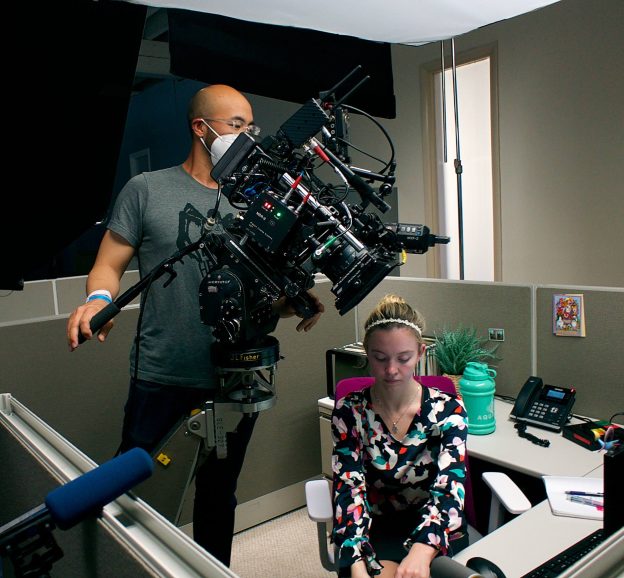
What did your camera and lens package comprise? Why did you choose this kit and what look did it help you achieve?
Most of Reality takes place in the one small room, so the Alexa Mini LF with its wide field of view and compact size was practically a necessity for our production. We were so fortunate that ARRI Rental worked with us so we could use their proprietary DNA LF primes. They are so effortlessly beautiful; they add so much character and texture to an image without being too sharp. They also produce a swirly cat-eye bokeh at the edges that adds a painterly quality to the image. I particularly love the lenses at the wide end of the set; a close up with the 29 or 35 feels like a contoured landscape of the human face. They allow you to be so physically close to a face without distorting it, they are incredibly intimate.
Do you like to operate, and did you do so on Reality?
There are aspects of operating that I love and parts that I don’t care for. I love having that precise control over movement and composition and I do think that it’s helpful to be very close to the camera and really be ‘in’ the scene reacting to the energy of the actors. I’ve found that actors often rely on the operator for help with blocking and movement and it helps to cut down on excess discussion if I am the one behind the camera.
The aspect of operating that I don’t like is the sort of tedious technical orchestration of every setup that involves shuffling marks, rebuilding the camera, advising on set decoration, etc. It’s not that I don’t like doing those things, it’s just that there are often larger picture issues that need to be discussed between setups that make it hard to focus on technical minutiae.
How did you use framing and composition to portray the relationship between Reality and the FBI?
The movie starts with two wide shots of Reality, one from behind her as she works in her cubicle, and the second a slow panning zoom as she walks to her car. From there, the size of the coverage slowly draws closer to her; it goes from procedural and balanced to subjective and visceral. Honestly, we didn’t discuss this technique in prep, so I think it’s a motif that Tina and Jenn Vecchiarello (our wonderful editor) constructed in post.
Were there any new techniques or technologies that you were able to use on Reality?
Reality is the first film I’ve done where I was able to supervise every colour grade pass and it was an incredible learning experience. We did the primary grade in SDR 709, then a P3 pass for DCP, a Dolby HDR pass, and then a Dolby SDR pass. Again, we were so fortunate to have our colourist Marcy, who believed so strongly in the movie and took incredible care in making sure each version honoured the work we did in our primary grade.
I love consulting on the DI process because the movie starts to feel so REAL at that stage and you get to smooth out the little lighting issues that are too small to be addressed during the production.

Is there a specific scene where you could take us through the lighting setup?
We did film the room on location [as opposed to a stage] and our gaffer Kevin Villafuerte and key grip Connor Bewighouse designed a setup that gave us an incredible amount of control over the natural light coming from the windows as well as the practical fluorescent that is omnipresent in the room. Outside of each bank was a tabled ultrabounce that functioned as an eyebrow to keep direct sun from entering the room. Under the windows were SkyPanel S60s that were hitting into the ultrabounce so we could control the luminance of the windows. Our set decorating team treated the windows to appear water stained and dirty so that there was a bare minimum of visibility through the windows. We wanted the windows to be bright and transparent but not a clean white blowout.
I continue to be amazed by how much lighting technology has changed since I worked as a gaffer in the late ’00s. Kevin had all of our units programmed into his iPad and was able to shift lighting setups with unbelievable speed. I know that capability is sort of standard now but some of the light cues we achieved would have required so many more resources just five years ago.
Who did the grade and what was their brief?
There are so many things that I love about working with Marcy – she is an artist, a technical wizard, and one of the very best people to be trapped in a dark room with for 50 hours a week.
I think that the greatest strength of our working relationship though is that we are able to discuss the grade in the abstract as opposed to the strictly technical. Her understanding of colour theory in tandem with her prowess with Resolve allows her to synthesise the thoughts and feelings in the room and project them onto the screen.
Initially I thought that the limited locations would make the grade faster than usual but honestly it made colour continuity much more critical. For instance, an overall luminance shift in one shot could affect the work for minutes in both directions on the timeline.
Do you have a favourite memory/anecdote from shooting Reality?
I loved being on the Reality set. It was an independent film production and our crew mostly consisted of young and talented filmmakers in the nascent stage of their careers. It seemed like everyone was an aspiring artist who was just excited to be part of a project they believed in. Our camera crew (1st AC Paola Esquivel-Oliveros and 2nd Joan Michel) are both immensely talented filmmakers and photographers in their own right and their enthusiasm really made every day special for me. I love being around that kind of positive energy – it’s infectious.

What are you most proud of from your work on Reality?
With every project, I develop a list of principles that I try to apply to production – a sort of list of camera rules that I try to follow and only break if it adds to the storytelling. One of the rules for Reality was ‘avoid symmetry and level tilt.’ I felt like that was a way to make the room feel a little off kilter and that a symmetrical frame could make the movie feel too formal and staged. That tenet quickly became a go-to problem solving tool – if a composition felt a little off to me, we’d boom up a little and tilt down or pan a hair so that the lines of the room were slightly oblique – and very often that was enough to ‘correct’ the frame. It’s weird, but I guess I’m proud that I came up with a self imposed restriction and stuck to it.
Are there any key crew members not yet mentioned that you’d like to highlight?
I definitely want to shout out the creative producers – Riva Marker, Noah Stahl, and Brad Becker-Parton. All three of them were so supportive of Tina’s vision but also challenged us when they felt strongly about something. I think it’s so important that directors align themselves with producers who have a similar predilection.
I’d also be remiss not to heap praise on our production designer Tommy Love. So much of the visual character of the movie comes from the design of the house and the back room and really all of that is Tommy and the art team – all of the details were so thoroughly considered. There was always something weird and interesting in the frame. It really made my job so easy.
What’s your next project?
Joy Ride is in cinemas on 7 July and I am very excited for people to see it. Obviously, it’s very different from Reality but I think that it will be special to a lot of people. Other than that, I am waiting to line up my next movie and working on some personal projects in the meantime. I have a pipe dream of someday writing a book about cinematography and cooking and how each craft informs how to approach the other, but I think I’d like to film a few more movies first.
Reality is in UK and Irish cinemas now.


